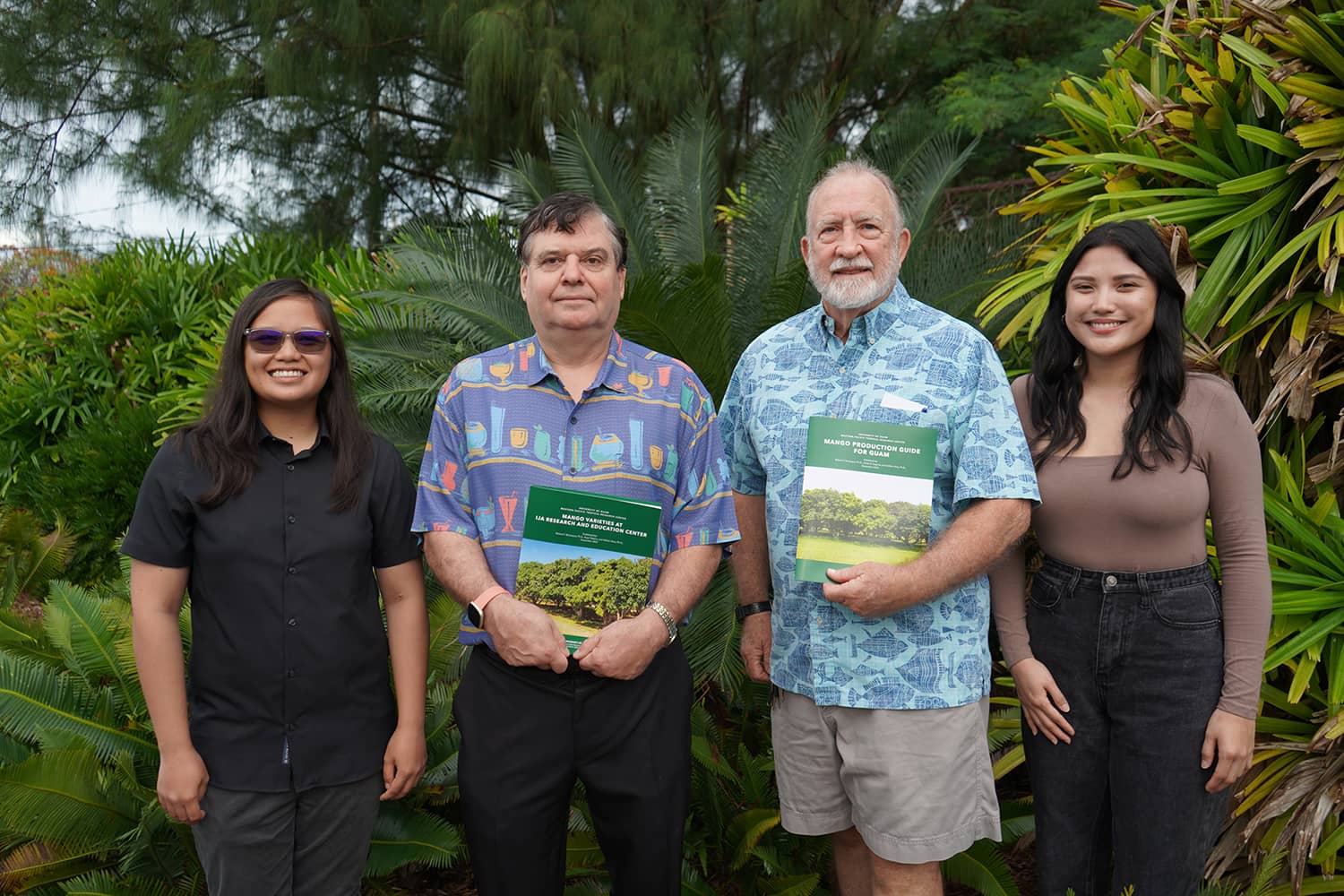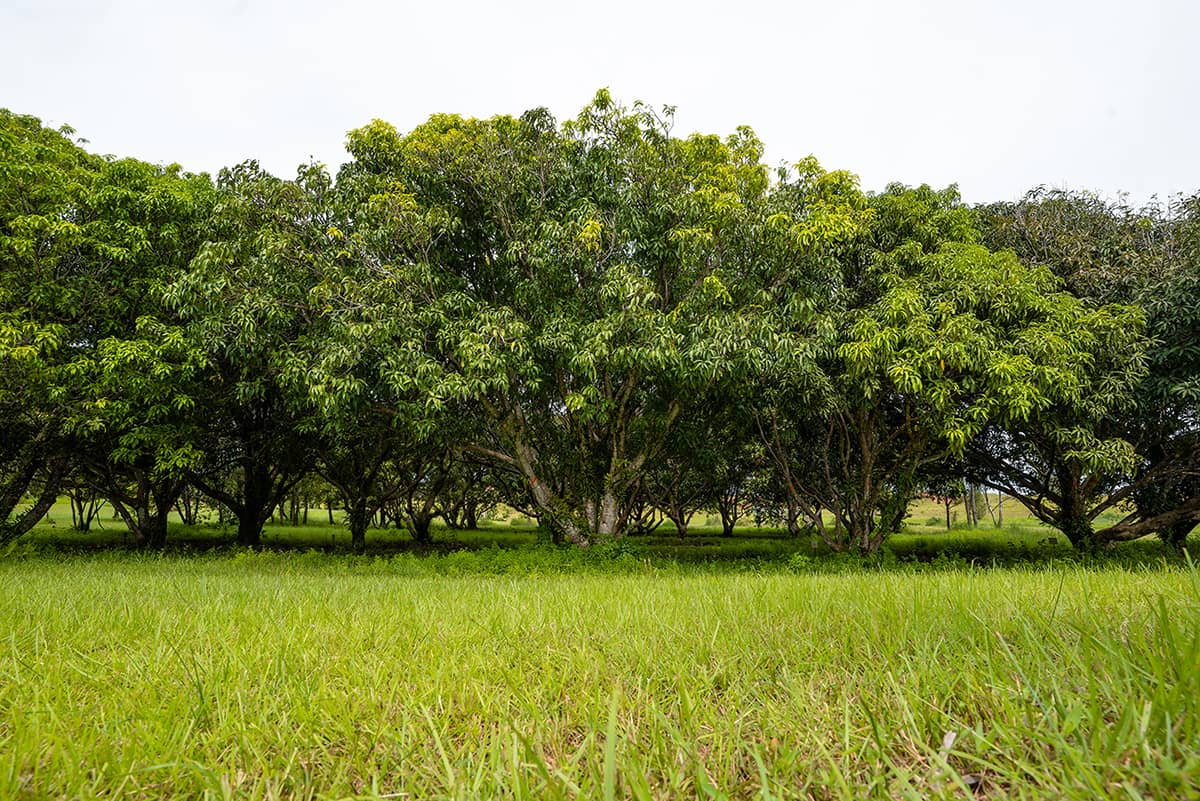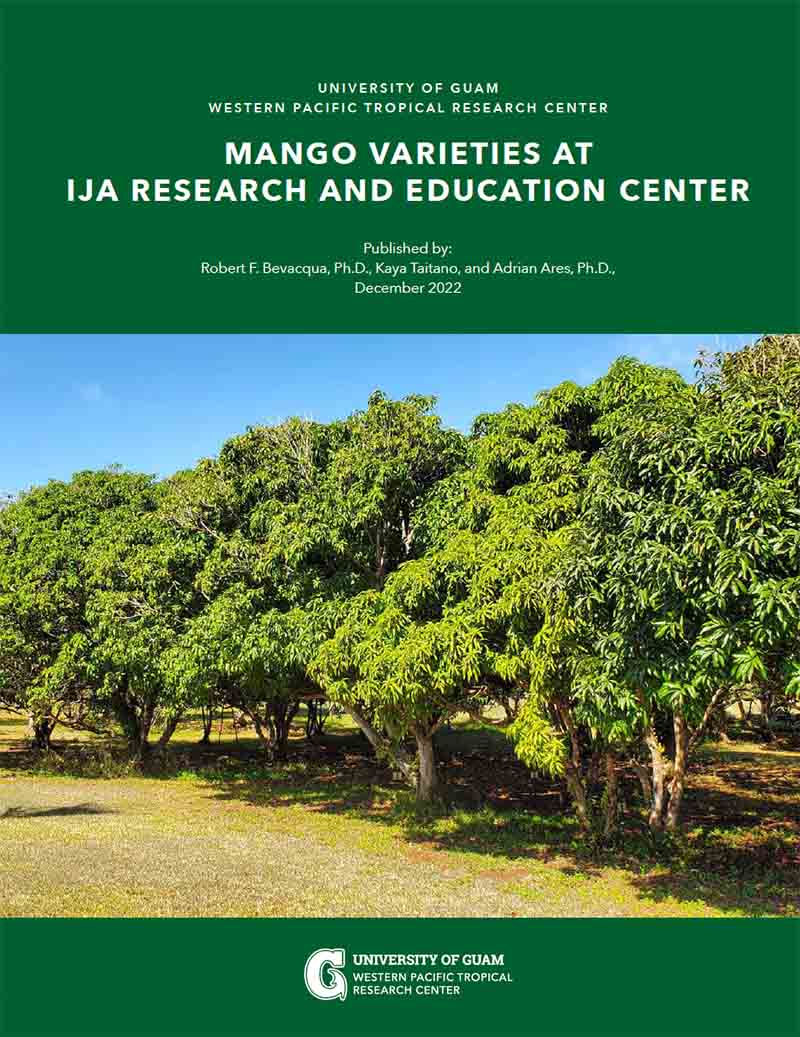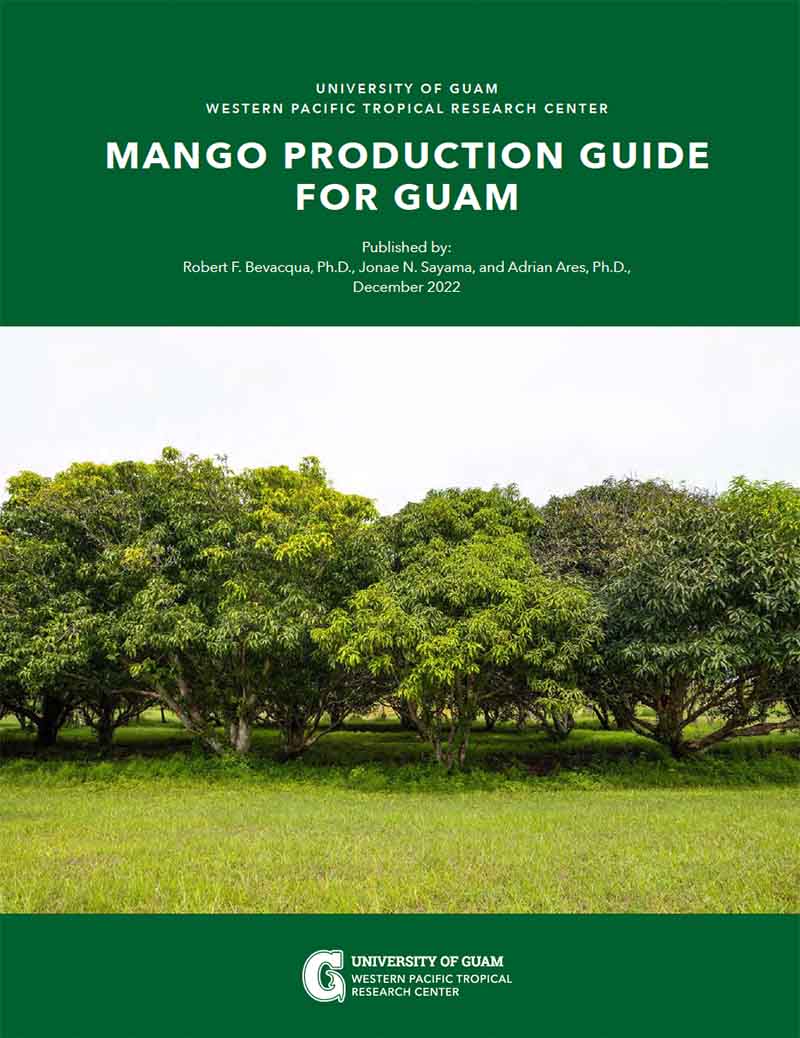UOG looks to facilitate mango research, improve production
UOG looks to facilitate mango research, improve production
UOG looks to facilitate mango research, improve production
1/26/2023

A 30-year-old mango tree orchard on the University of Guam’s Ija Research & Education Center and two newly published guidebooks are ready for people who want to help improve mango production in Guam.
Despite the fruit’s popularity among residents and farmers’ interest in growing more of it, mango production in the last agricultural census was reported from only 700 of the more than 200,000 mango trees on island.
Yields are often erratic and unsuccessful, constrained by climate, disease, and a lack of varieties that do well in these conditions.

With the orchard recently trimmed to a more accessible height, it will be easier to utilize for research, providing knowledge about mango varieties that are best adapted to Guam’s climate and are resistant to or tolerant of fungal diseases.
Additionally, the orchard can improve the availability on island of the more desirable varieties of mangoes. “Most mangoes on Guam are ‘boonie dogs,’” said Bob Bevacqua, a horticulturist at UOG who authored the new guidebooks. “They’re mixed heritage — uncertain DNA.”
In about a year’s time after its new growth, the orchard can be a source of budwood for farmers and nurserymen. Grafting budwood from a desired variety onto a rootstock of another tree will produce true-to-type mangoes.
 |
 |
| Download | Download |
Procuring budwood locally would also be cheaper and safer than importing materials, which must undergo strict inspection as they commonly have pests and plant diseases, according to state entomologist Chris Rosario with the Biosecurity Division of the Guam Department of Agriculture.
Published this month, the “Mango Varieties at Ija Research & Education Center” booklet, authored by Bevacqua, Kaya Taitano, and Adrian Ares, details the seed types, characteristics, and principal disease threat of each mango at the research station.
The second publication — “Mango Production Guide for Guam,” authored by Bevacqua, Jonae Sayama, and Ares — outlines the best practices for producing mangoes sustainably.
Both guides are downloadable (see right) or available in hard copy from the Western Pacific Tropical Research Center by calling (671) 735-2060. Additionally, a 2016 publication titled “Mango Tree Care on Guam” is also available for download here.
